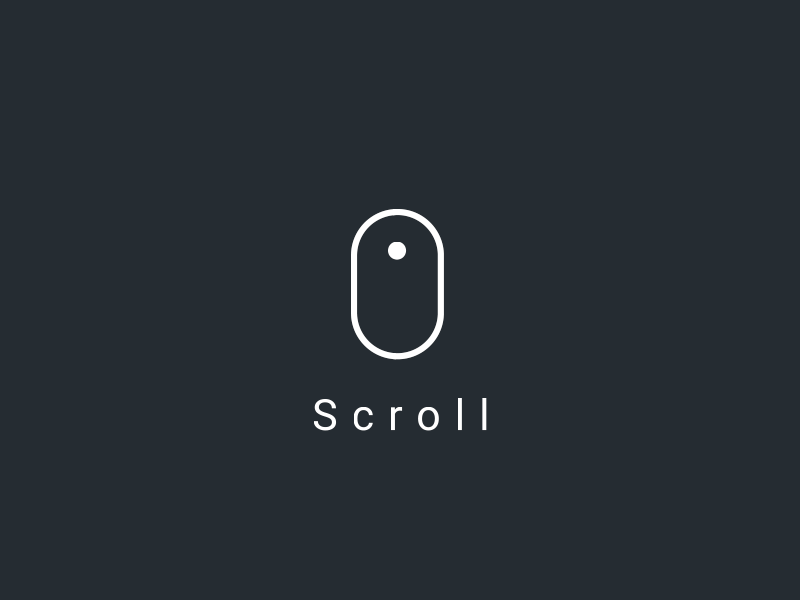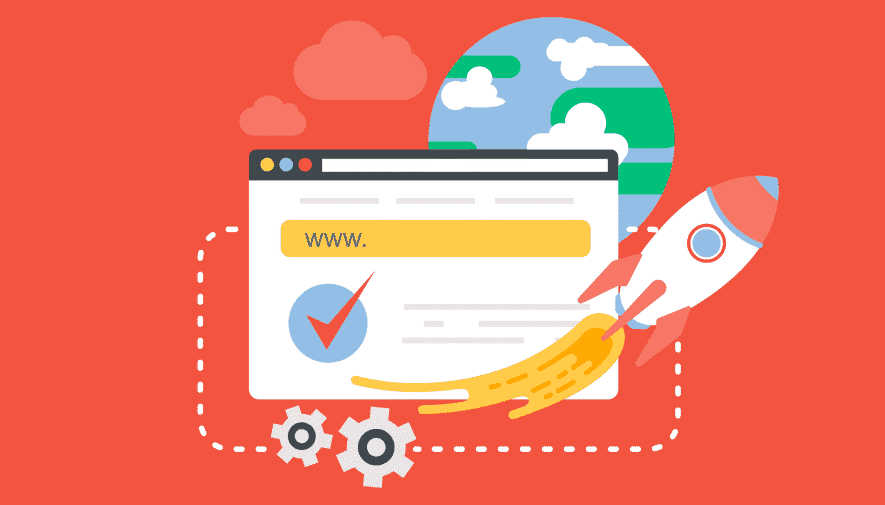
In the ever-evolving world of web design, staying at the forefront of trends and technologies is crucial for creating memorable and engaging user experiences. One of the most significant trends that has gained momentum in recent years is Motion UI. Motion UI is all about adding life to web design, breathing interactivity and dynamism into static web pages. In this article, we'll explore what Motion UI is, its importance, best practices, and how it can be effectively integrated into web design to create visually stunning and user-friendly websites.
- Understanding Motion UI
Motion UI, or Motion User Interface, is a design technique that leverages animations and transitions to enhance the user experience on websites and applications. It is a design approach that goes beyond static images and text, adding dynamic elements that grab the user's attention and guide their journey through a digital interface.
The primary goal of Motion UI is to engage and inform users, making the browsing experience more enjoyable, intuitive, and visually appealing. By incorporating motion, web designers can breathe life into otherwise static pages, turning them into interactive and memorable platforms.
- The Importance of Motion UI in Web Design
Motion UI has become increasingly important in modern web design for several reasons:
a. Enhanced User Engagement: Motion UI captures users' attention and keeps them engaged. It encourages users to interact with the website and explore its content, resulting in longer on-site durations and reduced bounce rates.
b. Storytelling: Motion UI allows designers to tell a story through animated sequences. Whether it's conveying the brand's message or guiding users through a product's features, motion can be a powerful narrative tool.
c. Intuitive Navigation: Well-implemented animations and transitions make navigating a website more intuitive. Users can easily understand how to interact with the interface, reducing frustration and improving user satisfaction.
d. Visual Appeal: Motion UI adds a layer of sophistication and visual appeal to a website. It helps create a more memorable first impression and makes the site stand out in a crowded digital landscape.
e. Responsive Design: Motion UI can help convey responsiveness in a website's design. Elements that move and respond to user actions make the site feel dynamic and modern.
- Best Practices for Motion UI
To effectively integrate Motion UI into web design, it's essential to follow some best practices to ensure that the animations and transitions enhance the user experience rather than detract from it. Here are some key guidelines to consider:
a. Keep It Purposeful: Every animation or transition should serve a purpose. Avoid excessive and distracting motion. Instead, focus on enhancing user interactions and conveying important information.
b. Prioritize Performance: Smooth and fluid animations are crucial. To achieve this, optimize graphics, CSS, and JavaScript. Overly complex animations can slow down a website and frustrate users.
c. Consistency Matters: Maintain a consistent design language and animation style throughout the website. This ensures a cohesive and polished user experience.
d. Test on Various Devices: Ensure that motion elements work well on different devices and screen sizes. Mobile users, in particular, should have a seamless experience.
e. Use Subtle Cues: Motion can be used to guide users' attention. Subtle animations, such as highlighting a call-to-action button or showing progress, can help users understand the interface better.
f. Accessibility: Consider users with disabilities when implementing Motion UI. Provide alternatives or ensure that animations do not hinder accessibility features like screen readers.
- Types of Motion UI
Motion UI can take various forms in web design. Here are some common types:
a. Microinteractions: Microinteractions are small, subtle animations or transitions that provide feedback or guide users. Examples include button presses, form field validation, and loading indicators.
b. Page Transitions: These animations are used when navigating between pages on a website. They can include sliding, fading, or flipping page transitions.
c. Scrolling Effects: Parallax scrolling and scrolling-triggered animations add depth and visual interest to websites. These effects create a 3D-like experience as users scroll down a page.
d. Hover Effects: Elements that respond to mouse hover are an effective way to engage users. Hover effects can be applied to buttons, images, and links.
e. Background Videos: Background videos add a dynamic element to a website's background. They can help set the mood and tell a visual story.
f. Loading Animations: Creative loading animations, such as spinners or progress bars, keep users engaged while they wait for content to load.
- Examples of Motion UI in Web Design
To better understand how Motion UI is used in web design, let's explore some examples:
a. Apple iPhone Website: The Apple iPhone website uses subtle animations when you scroll down the page. Images and text elements fade in smoothly, providing a sense of depth and engagement.
b. Google Material Design: Google's Material Design principles incorporate motion to provide a consistent user experience across their various platforms. Animations like the "Material Ripple" effect make interactions feel tangible and intuitive.
c. Airbnb's Booking Process: Airbnb uses animation to guide users through the booking process. When a user selects dates and guests, the search button smoothly transforms into a "Search" bar, creating a clear and intuitive call to action.
d. Stripe Dashboard: Stripe, the payment processing platform, uses motion to enhance its dashboard's user experience. Elements animate in response to user actions, making the interface feel responsive and dynamic.
e. IBM's Watson Studio: IBM's Watson Studio leverages motion to showcase the capabilities of its AI platform. The website features a captivating background video that highlights the product's potential applications.
- Tools for Implementing Motion UI
Several tools and libraries can help web designers implement Motion UI effectively. Some of the most popular ones include:
a. GreenSock Animation Platform (GSAP): GSAP is a powerful JavaScript library for creating high-performance animations and transitions. It offers a wide range of animation options and is widely used in the industry.
b. CSS Animations and Transitions: Cascading Style Sheets (CSS) offer native support for animations and transitions. Using CSS can be an efficient way to add motion to web elements.
c. Adobe Animate: Adobe Animate is a professional tool for creating interactive animations and multimedia content. It's particularly useful for complex animations and interactive web applications.
d. Lottie: Lottie is an open-source animation tool created by Airbnb. It allows designers to export animations created in Adobe After Effects to a format that can be easily integrated into web projects.
e. Framer Motion: Framer Motion is a popular animation library for React. It offers a simple and intuitive API for creating animations in React applications.
- Challenges and Considerations
While Motion UI has many benefits, there are challenges and considerations that web designers should be aware of:
a. Performance: Overly complex animations can lead to performance issues, especially on older devices or slow internet connections. It's crucial to strike a balance between visual appeal and performance.
b. Cross-Browser Compatibility: Not all browsers support the latest animation features, which can lead to inconsistent user experiences. Designers need to ensure graceful degradation for unsupported browsers.
c. User Preferences: Not all users appreciate motion on websites. Some may find it distracting or prefer a more static experience. Providing options to disable or reduce motion can be a thoughtful addition.
d. Accessibility: Motion elements should be accessible to users with disabilities. Designers need to consider how motion interacts with assistive technologies and provide alternatives or adjustments as needed.
- The Future of Motion UI
As web technologies continue to advance, Motion UI is likely to play an even more prominent role in web design. Virtual reality (VR) and augmented reality (AR) are two areas where motion and interaction will be crucial for creating immersive experiences. Additionally, the increasing use of mobile devices and touchscreens will drive further innovation in Motion UI, as designers seek to optimize the user experience on smaller screens.
Incorporating motion into web design can also extend beyond the visual realm. As voice interactions and AI become more prevalent, designers may explore how motion can enhance auditory and haptic feedback, creating multisensory experiences that are both informative and enjoyable.
Conclusion
Motion UI is a dynamic and powerful tool in modern web design, offering numerous benefits in terms of engagement, usability, and aesthetics. When used thoughtfully and purposefully, animations and transitions can elevate the user experience, making websites more interactive, intuitive, and visually appealing. However, it's essential to strike a balance between motion and performance, consider user preferences, and ensure accessibility.
As technology continues to evolve, the role of Motion UI is likely to expand, bringing new possibilities and challenges to web design services providers. Staying up-to-date with the latest tools and trends in Motion UI will be crucial for those looking to create cutting-edge web experiences that captivate and delight users. In the ever-changing landscape of web design, Motion UI is a powerful tool that can breathe life into digital interfaces and create websites that stand out in a crowded online world.




